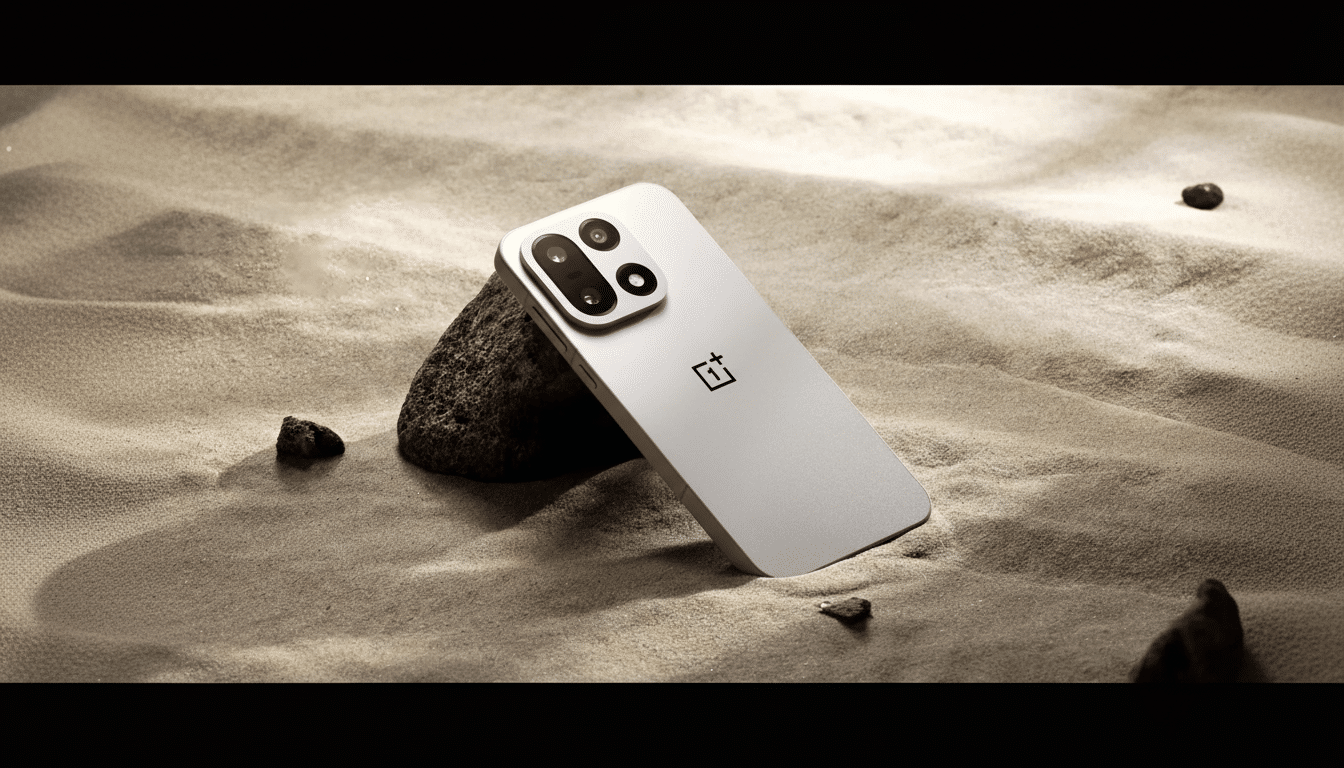OnePlus is shining a light on the display of the OnePlus 15, claiming it as an outright upgrade. The company’s teased improvements include a quicker 165Hz panel, thinner bezels, an increase in maximum brightness and reduction of power use, as well as the addition of a new display co-processor. The message is unmistakable: there’s nothing missing from last year. The truth is more complicated, but the hardware tale is an interesting one.
What OnePlus is promising for the OnePlus 15 display
Official teasers confirm a 165Hz LTPO OLED manufactured by BOE, continuing the partnership that goes back to the previous generation. OnePlus contends that the bezels shrink to be only 1.15mm on all four sides, driving toward the industry’s thinnest margins and supporting a near-all-screen look.
- What OnePlus is promising for the OnePlus 15 display
- Why 165Hz and thinner bezels could matter daily
- The screen silicon and display co-processor strategy
- Brightness gains are real but come with key caveats
- The quiet trade-offs that may still be lurking here
- Bottom line on OnePlus 15 display upgrades and trade-offs

And brightness is a step up too. That’s a 13% improvement over the high-brightness mode of the outgoing model, which comes in around 1,800 nits throughout the panel — as opposed to pixel-level peak values that are typically much higher. Not only is there 10% less power consumption, but the panel will deliver a 30% longer lifespan, which we reckon are possible testaments to BOE’s improvements to the emitter and driver.
The display can get as dim as 1 nit at its lowest, which has implications for bedtime reading and dark-room use, cutting the previous generation’s minimum brightness in half. In theory, these would be pragmatic upgrades that users would feel every day.
Why 165Hz and thinner bezels could matter daily
Jumping from 120Hz to 165Hz shaves frame times down to approximately 6 milliseconds, which smooths out fast in-game motion and quick-scrolling feeds. Even though many flagships are at 120Hz now, we can see with gaming phones the effect of 165Hz on input lag and movement clarity. The trick is in adaptive behavior: a well-calibrated LTPO panel should dial refresh down when presenting static content to save power.
Playing the specification game with bezel sizes is less important and barely matters. Slimmer borders allow for a more immersive viewing experience when placed side by side and a larger overall display area. If OnePlus achieves 1.15mm all the way around, then that would challenge some of the most balanced, ridiculously thin frames on a mainstream handset — an area where premium models from Apple and Samsung set the benchmark very high.
The screen silicon and display co-processor strategy
OnePlus is also doubling down on a dedicated display co-processor. Previous flagships relied on Pixelworks chips both for motion processing and color management. This time around it emphasizes an in-house path through OPPO’s Display P3 processor to assume responsibility for frame creation, color uniformity, and brightness stability without burdening the main SoC.
Freeing up these tasks can cut down heat and may smooth performance when the panel is refreshing every 6 milliseconds. Similar tactics are employed across the industry: custom display ICs and co-processors are also in place at leading names to stabilize high-refresh pipelines, keep UI latencies in check, and maintain consistent tone mapping for lighting conditions.

Brightness gains are real but come with key caveats
OnePlus is claiming a boost in whole-screen brightness to about 1,800 nits. That number is typically a lot more relevant to real-world use in sunlight than big headline-grabbing peak numbers — which just happen on tiny windows. Independent testing outfits like DisplayMate and DXOMARK tend to distinguish sustained full-screen brightness from peak highlights, a detail that matters when you’re reading maps or shooting photos outdoors.
The new 1 nit minimum is the other side of the same coin, protecting your eyeballs from a scorched-earth assault in a dark room. Paired with an LTPO controller that can dial the refresh down when idle, these decisions should make for comfortable after-hours sessions and improved general battery life.
The quiet trade-offs that may still be lurking here
Despite all that “no downgrades” mumbo jumbo, the OnePlus 15 is very likely going to downgrade you from QHD+ to a 1.5K-class resolution on a slightly smaller 6.78-inch panel. It’s not a deal-breaker: at this size, a 1.5K panel still ends up in the high-400s in pixels per inch — sharp enough to make sure most users won’t see individual pixels at normal viewing distances.
The upside is efficiency. The fewer pixels, the less pixel compute the GPU pushes at ultra-high refresh rates, and the less overhead on display drivers. Power savings here can be significant under mixed use, particularly with 165Hz enabled, as manufacturers frequently quote. Put another way, the “downgrade” can represent a clever reallocation: spend less on resolution the eye doesn’t actually require and more on smoothness, brightness, and stamina.
Bottom line on OnePlus 15 display upgrades and trade-offs
OnePlus is positioning the OnePlus 15 screen as nothing short of a massive upgrade. The situation is more nuanced than that: 165Hz, slimmer bezels, improved sustained brightness, and a dedicated display processor sound like real improvements; and if the rumored 1.5K resolution proves to be accurate, we can at least see it as a trade-off between efficiency and thermal headroom.
If the LTPO tuning, color management, and power savings deliver in practice, most people are going to feel this where it counts — on a daily basis using your phone. The final ruling will wait upon independent lab testing and hands-on time once the device comes out.

